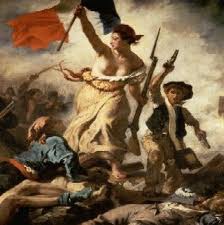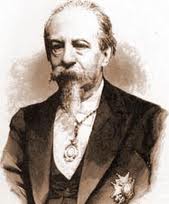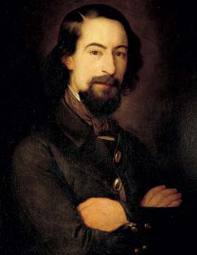Spanish Romanticism Drama
While in the British isles and the Germanic countries Romanticism spread like a virus from the last quarter of the XVIII century onwards, the French, and by extension the Spanish, were a lot less perceptive to the Romantic aesthetic, especially in literary terms, than their European neighbours.

This might seem somewhat surprising, particularly in the context of the French Revolution, which championed notions of patriotism and national sentiment that quickly conquered the imagination of Romantic authors. Nevertheless, the lofty ideals of rationalism brandished throughout the Age of the Enlightenment were deeply embedded in the French collective consciousness and would dominate the scene until the middle of the XIX century.
The specific case of Spain towards the end of the XVIII and the beginning of the XIX centuries is as peculiar as it is fascinating. The country hopped onto the rationalist train very late, towards the final decade of the 1700s, when in England and in Germany Romanticism was already the dominating force.
Nevertheless, the deep influence of French taste and etiquette, which the new Bourbon dynasty had made fashionable in Spain during the XVIII century, was quickly turned into utter resentment by the Napoleonic invasion of 1808 and its immediate aftermath. They were years of intense conflict and the most profound of crises, as the war at home lead to unrest and, ultimately, independence in the South American colonies.

Consequently, the ascendance of Spanish Romanticism in the XIX century was rather abrupt, emerging as soon as the 1830s and dominating the rest of the century, until well into the 1880s. In relation to Spanish theatre in particular, José Zorrilla would soon consolidate his position as the most successful representative of the movement in the country.
While there are several different political strains to Spanish Romanticism, artistically their characteristics point roughly in the same direction: in essence, the great dichotomy addressed by the Romantics involved the seemingly inexorable role irrational emotions (feelings, sentiment, instincts, even) have to play in human experience, contrasted to the disproportionate cult which the Age of Enlightenment had built around Reason.
The key term to understand Romanticism in general, and Spanish Romanticism in particular, is Imagination, a word that has survived in the contemporary lexicon, both in English and in Spanish, but which these days has gained a different meaning to the one ascribed to it by the Romantics. But try carrying out a common exercise given out to students in Spanish language schools: try building a concept for the opposite word - unimaginative, stolid, insensitive.
The Imagination
The Imagination was taken to be a synthesising faculty, capable of reconciling rational concepts with emotions, the essential principle of Human Nature, as it were, at work in the creative process above all, but also in the generation of empathy, for instance.

Artistic creation and the conveyance of empathy, then, the governing principles of dramatic art, belong entirely to the faculty of the Imagination. Thus, once Spanish Romanticism hit the ground, it should have done so running. And it did, in the shape of José Zorrilla, and to lesser extent, Juan Eugenio Hartzenbusch, who, by the way, rediscovered the art of Tirso de Molina and began the regeneration of his reputation.
As a matter of fact, it is not by chance that one of the greatest writers of the Baroque was retrieved from obscurity during this period. While evidently and radically different in its precepts, Romantics in Spain, sought, like their Baroque forefathers before them, to break with the unitary structure of plays, to combine comedy and tragedy, to portray humans as complex, and ultimately irrational, beings.
This much is put in evidence by José Zorrilla in his most famous dramatic poem, Don Juan Tenorio, which, of course, revisits the character of Don Juan, masterfully developed by Tirso de Molina in The Trickster of Seville. Boastful and insensitive, Don Juan, paired with the highly emotional Doña Inés, provide the perfect setting for José Zorrilla to explore the depth and reach of sentiments in human behaviour in all the splendour of Spanish Romanticism.
